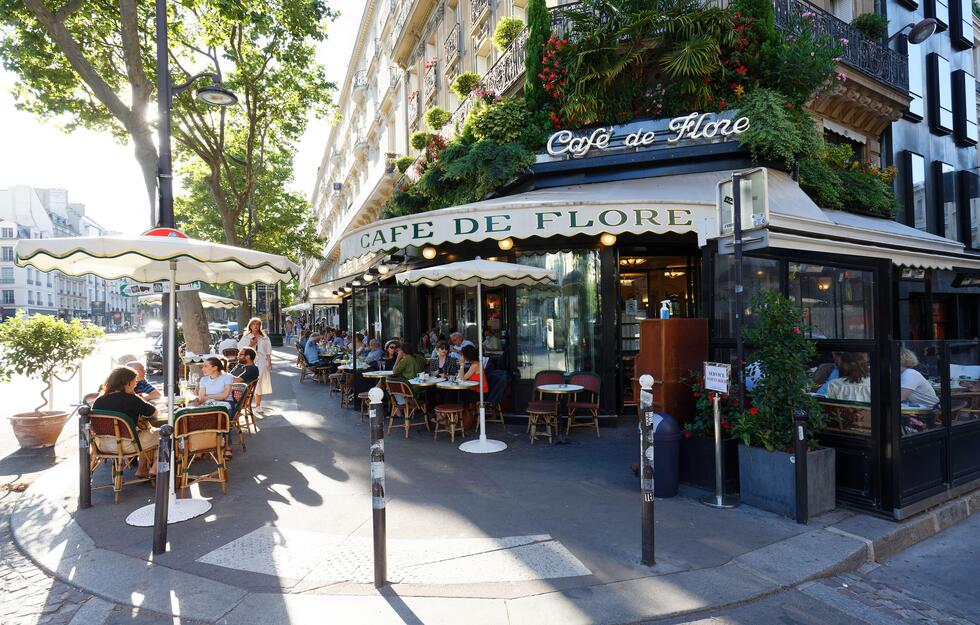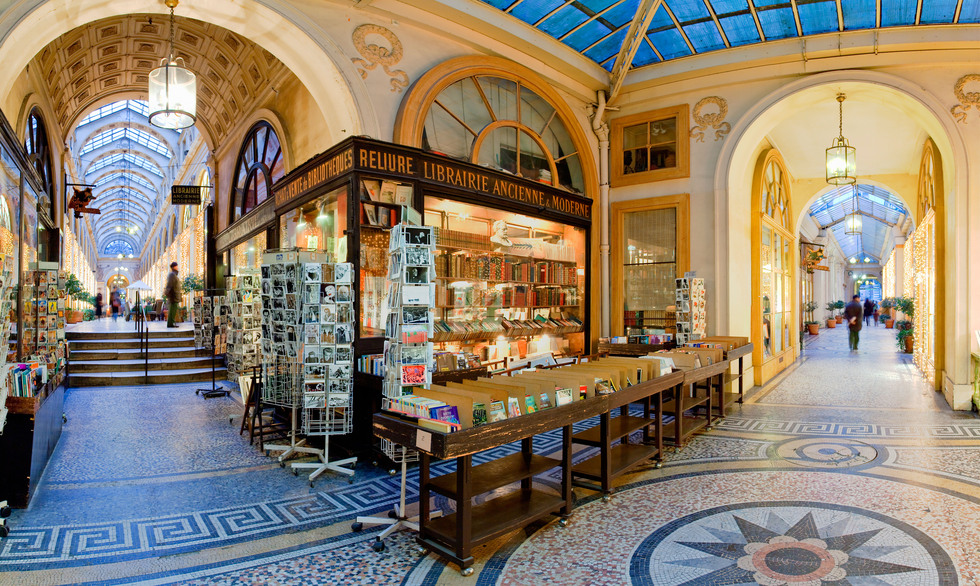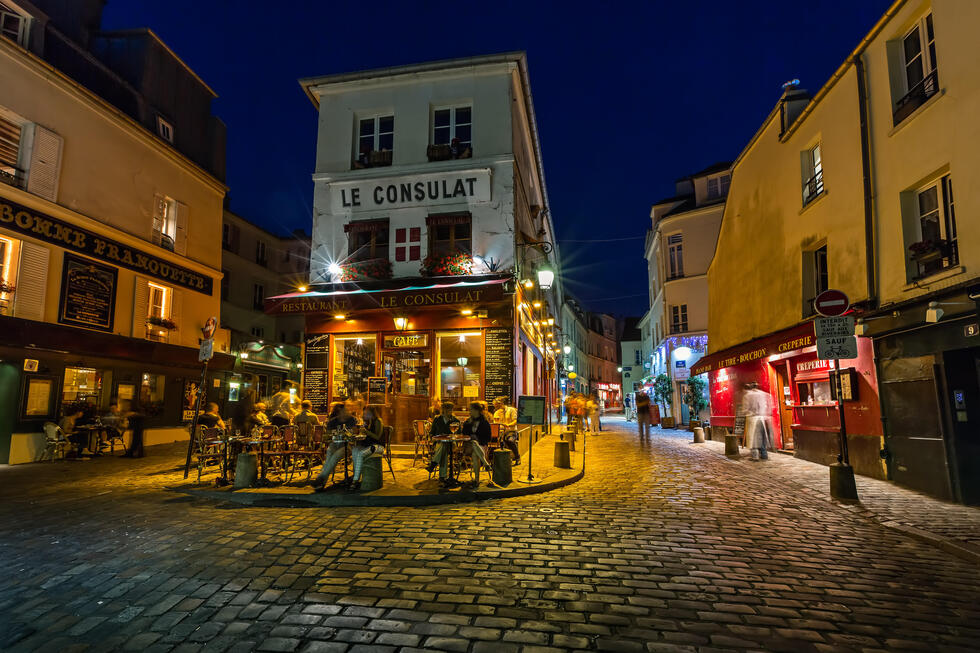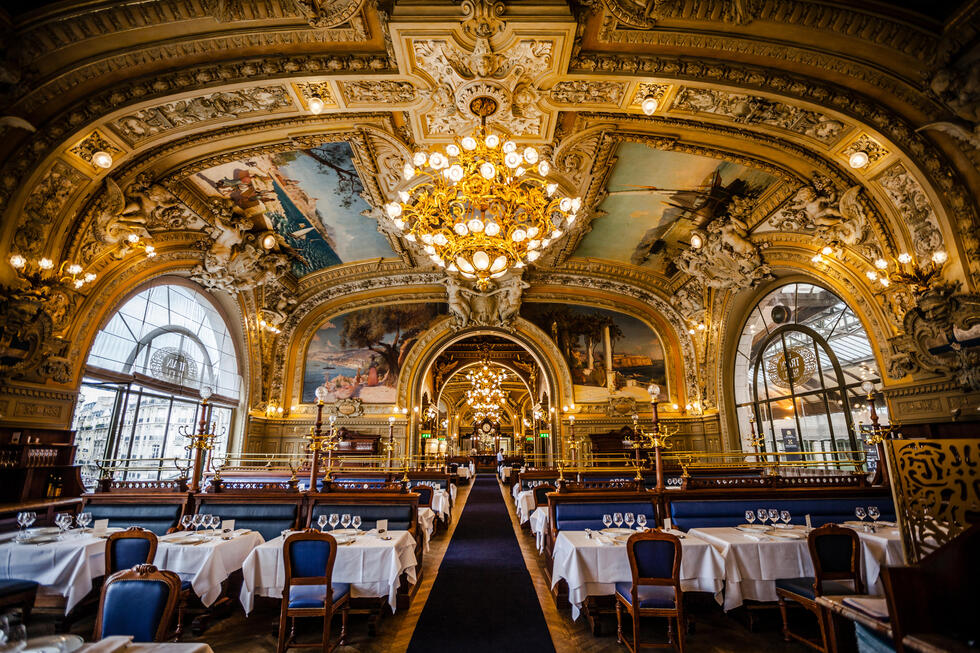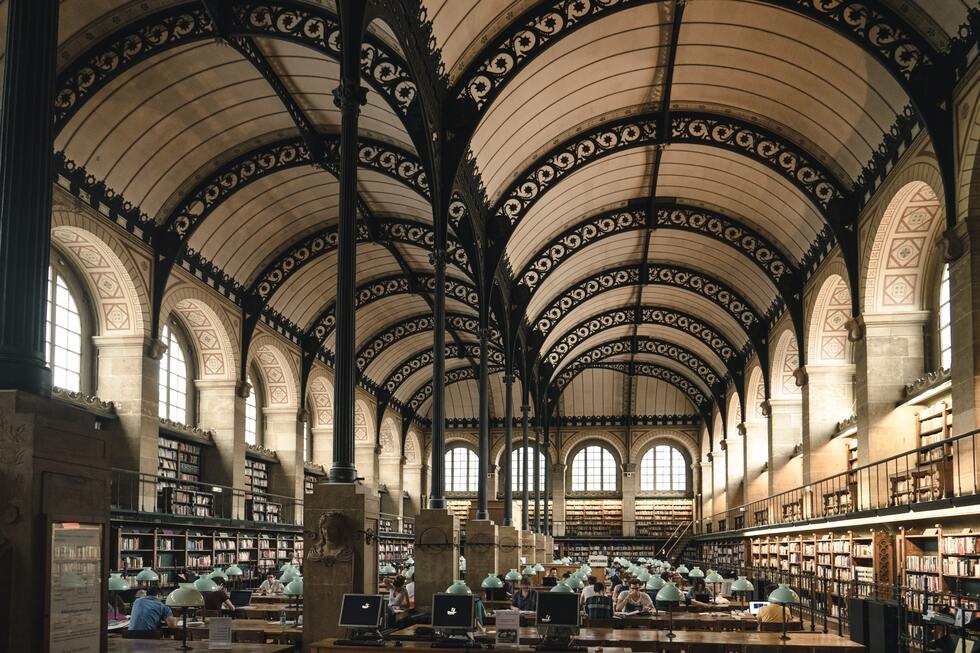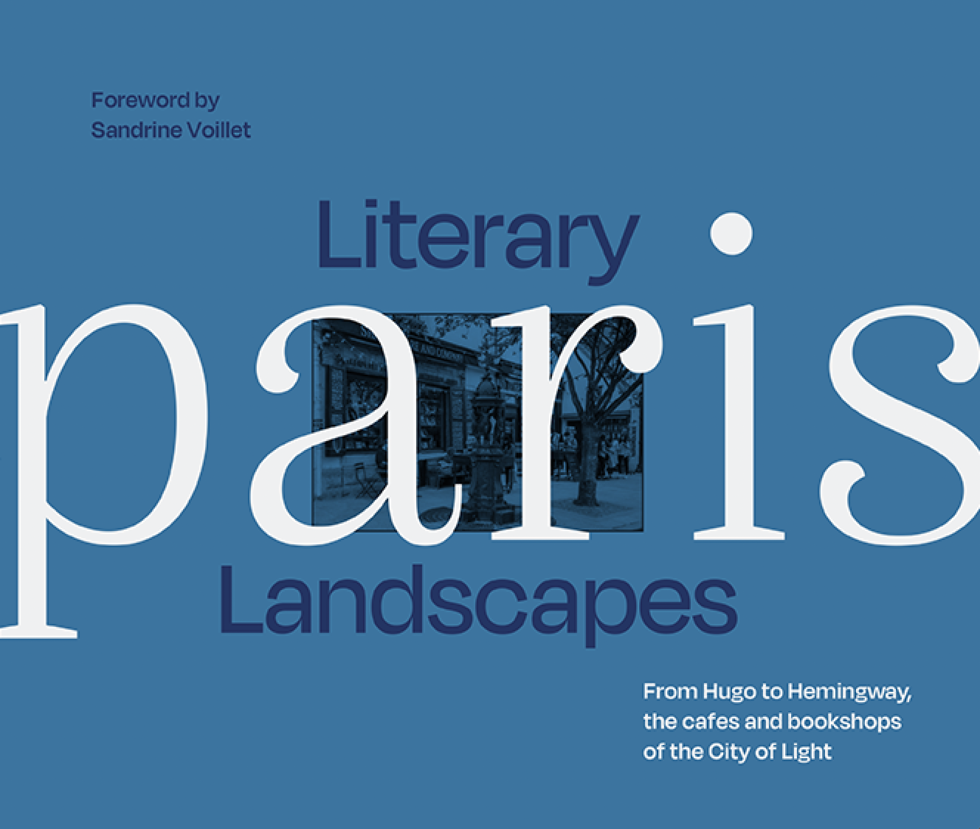Paris Bookshops, Cafes, and Other Stops to Add to a French Literary Pilgrimage
By Zac ThompsonApril 19, 2023
Paris is known as the City of Light, but it could just as aptly be nicknamed the City of Lit.
After all, it's the hometown of writer-stuffed cafés, poet-haunted cobbled lanes, green bookstalls flanking the Seine, Gertrude Stein's salon, Marcel Proust's cork-lined bedroom, the hunchback's Notre-Dame, the phantom's Opera, and Oscar Wilde's tomb.
The French capital's historically outsize role in the life of great authors—as a subject, a safe haven, and a seller of their work—is celebrated in the new book Literary Landscapes Paris (Pavilion Books; $28.99), which takes readers on a "photographic stroll" through the city's noteworthy bookshops, literary cafés, theaters, and other sites that influenced wordsmiths "from Hugo to Hemingway."
Alongside archival images as well as scores of lush full-color photos of inviting sidewalk tables and enough book-lined shelves to set any bibliophile aflutter, informative text by Dominic Bliss (with a foreword by Sandrine Voillet) supplies details about the history of all the stops, along with info for finding each location the next time you're in Paris.
Additionally, several standout authors—both homegrown and expatriate—get individual profiles, should you want to tour Victor Hugo's home, sit in Simone de Beauvoir's preferred corner window seat at Les Deux Magots, visit the erstwhile gay cruising spots that inspired James Baldwin to write Giovanni's Room (1956), or hit up F. Scott Fitzgerald's favorite watering holes (get ready for a long night).
Scroll on to see some of our favorite images from the book.
Pictured above: Shakespeare and Company bookstore on the Left Bank
Among the notable literary figures who logged time scribbling, philosophizing, and drinking at this Saint-Germain-des-Prés landmark (172 Blvd. Saint-Germain): Guillaume Apollinaire, Albert Camus, Jean-Paul Sartre, Marguerite Duras, Truman Capote, and James Baldwin.
Though tourists outnumber novelists these days, the café does have its own literary prize, the Prix de Flore. In addition to money, the winner gets "a free glass of Pouilly-Fumé [white wine] at the café every day for a whole year," according to Literary Landscapes Paris.
Set in a covered shopping arcade known as Galerie Vivienne (4 rue des Petits Champs), this venerable bookshop has been around since 1826. The roughly 40,000 volumes on display cover subjects such as history, poetry, theater, and music. You'll also find illustrated books, engravings, postcards, and greetings cards.
Famous for attracting painters in the late 19th and early 20th centuries, bohemian, hilltop Montmartre was frequented by plenty of experimental writers too—usually poets and playwrights. At 14 rue Nicolet, you can see the house where wild Arthur Rimbaud moved in with Paul Verlaine, terrorizing the older poet's in-laws. And behind the facade of the Bateau-Lavoir workshop (13 Place Emile Goudeau—and the facade is about all you can see today), poets Apollinaire and Jean Cocteau hobnobbed with Pablo Picasso and company while the latter set about inventing Cubism. Somewhere amid all that, there was time for onion soup and escargots at Le Consulat (18 rue Norvins).
What Literary Landscapes Paris calls the "lodestone of Parisian bookshops" occupies a prime spot (37 rue de la Bûcherie) on the Left Bank, not far from Notre-Dame. Opened after World War II by American George Whitman, the English-language bookstore is actually the city's second Shakespeare and Company—this one named after the original, opened by Lost Generation patron (and arguable patron saint) Sylvia Beach, who provided crucial support for Ernest Hemingway and James Joyce, among others.
Today, Shakespeare and Company continues its tradition of helping writers, from maintaining a noticeboard with info and opportunities (pictured above) to offering lodging to emerging writers who work in the shop.
Originally opened for the Exposition Universelle of 1900, the eye-poppingly ornate restaurant inside the Gare de Lyon railway station (Place Louis-Armand) belongs on a literary tour of Paris for several reasons, starting with the dining rooms' perfect evocation of the Belle-Époque era, a time of modernity (railways) mixing with lavish tastes (chandeliers and frescoes) that was chronicled and critiqued in the disparate work of French writers such as Marcel Proust and Colette.
Further literary connections: The restaurant's murals feature an appearance by Cyrano de Bergerac author Edmond Rostand. Celeb of letters Jean Cocteau was a regular during the restaurant's heyday. And a novelist–turned–cultural affairs minister, André Malraux, was influential in getting the place historical monument status in the early 1970s.
The oldest holdings of the Sorbonne University's Sainte-Geneviève Library (10 Place du Panthéon, across from the Panthéon) come from a medieval monastic collection that just barely survived the French Revolution. But the 19th-century reading room (pictured above) comes from an era more in line with the other places on our list. The visible iron framework devised by architect Henri Labrouste to support the ceiling proved a highly influential innovation in modern architecture.
See the library's website for times when the building is open to the public.
Literary Landscapes Paris: From Hugo to Hemingway, the Cafes and Bookshops of the City of Light by Dominic Bliss (with a foreword by Sandrine Voillet) is available from Pavilion Books for £20/$28.99 from bookstores and online booksellers.






